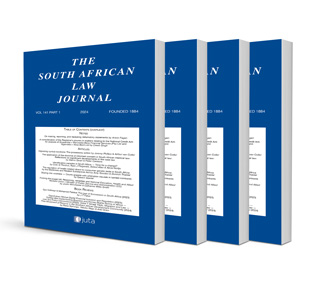Prescient precedent: PAF v SCF (SCA) and a new paradigm for testing whether a trust has been abused to manipulate a spouse’s accrual (or redistribution) liability at divorce

NOTE
Prescient precedent: PAF v SCF (SCA) and a new paradigm for testing whether a trust has been abused to manipulate a spouse’s accrual (or redistribution) liability at divorce
Author: Bradley S Smith
ISSN: 1996-2177
Affiliations: Senior Lecturer: Research, The Independent Institute of Education’s Varsity College; Extraordinary Professor of Private Law, University of the Free State
Source: South African Law Journal, Volume 140 Issue 4, p. 697-714
https://doi.org/10.47348/SALJ/v140/i4a1
Abstract
In this note, I argue that PAF v SCF 2022 (6) SA 162 (SCA) is a groundbreaking judgment for curbing the abuse of the trust form by spouses who are married out of community of property and who engage in unscrupulous ‘divorce planning’ aimed at manipulating their personal estate values for the purposes of dividing matrimonial property at divorce. PAF not only removes several uncertainties regarding our courts’ ability to pierce the veneer of an abused trust but also broadens our conventional understanding of what trust-form abuse entails in the divorce setting, particularly by virtue of its engagement with the SCA’s earlier (prescient) judgment in Badenhorst v Badenhorst 2006 (2) SA 255 (SCA). In the process, I argue that there is a need to reconsider the test formulated in REM v VM 2017 (3) SA 371 (SCA) for taking the asset value of an alter-ego trust into account for accrual claims at divorce. I further assert that the new paradigm PAF ushers in requires formulating a consolidated test that takes into account this reconsideration, as well as the novel factual matrix in PAF. I conclude that this consolidated test is not only capable of being applied in the context of accrual liability, but also where a spouse is eligible to seek a redistribution order in terms of s 7 of the Divorce Act.